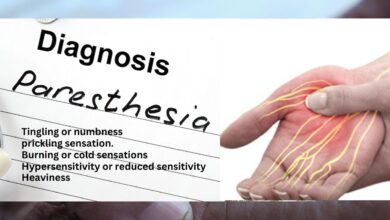Arthritis Management and Prevention-No1

Arthritis Millions of individuals throughout the world suffer with arthritis, a degenerative joint disease that limits movement and causes discomfort in the joints. Arthritis is currently incurable, but with proper care and prevention, sufferers can continue to lead full, active lives despite the condition. Simple lifestyle adjustments can have a significant impact on arthritis symptoms, and this blog post discusses practical techniques to control such symptoms and prevent the condition from getting worse. Let’s take a look at ways that arthritic pain can be better managed and prevented so that you can live a more comfortable life.
Table of Contents
Arthritis: A Comprehensive Overview and Its Effects
Arthritis: The two most prevalent forms of arthritis, osteoarthritis and rheumatoid arthritis, are among many others. Although inflammatory disorders like rheumatoid arthritis can strike people of any age, the degenerative joint disease osteoarthritis primarily impacts the elderly. Arthritis, in its various forms, usually causes:
Aches and stiffness in the joints
Joint discomfort, particularly when moving, is a common symptom of arthritis and can make it difficult for people with the condition to carry out even the most basic of daily activities.
Inflammation and Swelling
Joint inflammation can cause redness, swelling, and heat, which can amplify pain and limit mobility.
Decreased Mobility and Level of Activity
A person’s physical and mental health can take a hit if arthritis prevents them from engaging in physical activities.
Having a clear understanding of these obstacles might assist individuals in realising the significance of implementing methods for managing and preventing arthritis. In order to alleviate symptoms and stop the joint from getting worse, let’s examine a few options.
- Get Regular Exercise
Exercising regularly is one of the greatest methods to control and avoid arthritis. Regular exercise strengthens the muscles that surround joints, keeps them flexible, and decreases stiffness. By reducing the difficulty and pain of everyday motions, exercise can greatly enhance the quality of life for individuals living with arthritis.
Select Activities with Minimal Effect
Walking, cycling, and swimming are all great low-impact exercises that help build muscle without causing undue stress on the joints. Because water cushions the joints, swimming is an excellent option for those who suffer from joint pain.
If you’re having trouble walking lengthy distances, try breaking up your walks into shorter ones throughout the day. This method aids in avoiding joint stiffness by keeping joints active.
Include Resistance Exercises
One way to alleviate strain on injured joints is to strengthen the muscles surrounding them. Strength training with light weights, yoga, and resistance bands can help you achieve your fitness goals.
As an illustration, one way to alleviate joint pain and improve the muscles surrounding the knee is to use resistance bands.
Make Stretching a Daily Habit
Maintaining flexibility in your joints requires daily stretching. Regular stretching increases mobility in the joints, which in turn makes doing routine activities less taxing and more pleasant.
Hips, knees, shoulders, and wrists are some of the most important joints to stretch. An easy way to manage arthritic discomfort all day long is to do some light stretching first thing in the morning.
- Keep From Becoming Too Fat
Maintaining a healthy weight is an important part of dealing with and preventing arthritis. Joints, particularly the spine, hips, and knees take a beating when a person is overweight, which can lead to or exacerbate arthritis.
Keep an Eye on Fat Consumption
To keep the weight off, it’s important to watch what you eat every day and make sure your meals are balanced. Tips that can assist include eating lean proteins in moderation and staying away from meals that are heavy in calories but lack nutrients.
You can cut calories without compromising taste by doing things like eating more fruits and vegetables or eating baked items instead of fried ones.
Choose Foods That Reduce Inflammation
Some people get relief from arthritic symptoms by consuming foods that are high in fibre, antioxidants, and omega-3 fatty acids, which have anti-inflammatory characteristics. For healthy joints, eat plenty of seafood, nuts, berries, and vegetables.
For long-term protection of joint health and reduction of inflammation, it is best to eat complete foods rather than processed ones.
Make Sure You Stay Hydrated
Joint lubrication, which aids in the relief of stiffness and discomfort, is made possible by enough hydration. For healthy, flexible joints, drink enough of water throughout the day.
Always stay hydrated, especially when working up a sweat, by carrying a water bottle.
- Implement Methods for Handling Pain
The intensity of arthritis pain can range from moderate to severe. Managing these variances and improving everyday comfort can be achieved through the development of pain management methods. Here are a few methods that have shown promise:
Treatment with Cold and Heat
Stiff muscles and joints can be eased with heat therapy, while inflammation can be reduced and pain can be numbed with cold therapy. To get long-term relief from muscle soreness, try using a heating pad before activity and an ice pack afterward.
If you suffer from muscle stiffness or soreness at the end of a long day, try taking a warm bath before bed.
Think About Over-the-Counter Analgesics
Ibuprofen and other nonsteroidal anti-inflammatory medicines (NSAIDs) may help alleviate arthritic discomfort for a short while. To avoid long-term negative effects, it is important to use these medications cautiously and under medical supervision.
Another option for localised pain alleviation is to apply a topical lotion containing menthol or capsaicin to the affected area.
Make Use of Relaxation Methods
Because stress can worsen arthritis symptoms, it is helpful to reduce pain using relaxation techniques such as yoga, meditation, and deep breathing. Reducing discomfort and strengthening mental fortitude are two benefits of consistent practice of these methods.
One strategy for dealing with pain and muscle tension is to practise deep breathing for a few minutes every day.
- Prevent Damage to Joints
An important aspect of managing and preventing arthritis is preventing additional injury to the joints. Prolonging joint health and making daily activities easier can be achieved through the adoption of joint protection techniques.
Observe Correct Body Form
Joint strain can be minimised by employing proper lifting, carrying, and moving procedures. If you can’t move a large object, try sliding it or using a dolly or cart to help you.
If you want to ease the strain on your knees and lower back when you bend over, try using your knees instead of your back.
Opt for Shoes with Arch Support
Finding a pair of shoes that properly support your joints is crucial. Arthros sufferers benefit greatly from shoes that cushion the foot and arch to lessen the strain on the knees and spine.
Wearing shoes with extra arch support or orthotic insoles might alleviate some of the strain on your joints when you’re on the go.
Steer Clear of Repetitive Motions
Read more:Understanding Stroke and Brain Health
Conclusion
Over time, tension on your joints might result from repeatedly performing the same motion. To prevent putting undue strain on any one joint, try to change up your daily routine and the things you do.
To avoid stiffness, extend your hands and fingers every so often if you must type for long periods of time.
In summary
Arthritis management can be challenging, but with the correct approach, you can greatly reduce symptoms and enhance your quality of life. In order to live comfortably with arthritis, it is important to follow a regimen that includes regular exercise, managing weight, learning pain reduction strategies, and protecting joints. Keep in mind that managing and preventing arthritis are long-term endeavours. By remaining consistent with these measures, you can see beneficial benefits as time goes on.
With any luck, you’ll find useful information here for dealing with and avoiding arthritis. How have you dealt with arthritis? Are there any methods that have helped? Please use the space below to express your opinions or ask any queries you may have.




